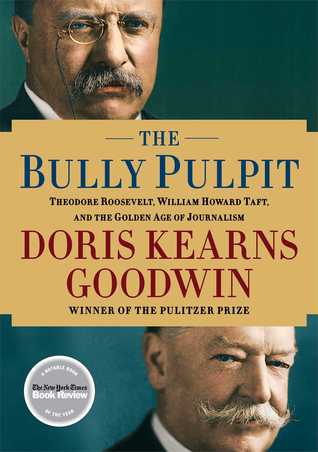 The early 20th century was a time of sweeping changes. Aided by the advent of investigative journalism, the common man learned more about than inner workings of governments that ever before, and many of them did not like what they saw.
The early 20th century was a time of sweeping changes. Aided by the advent of investigative journalism, the common man learned more about than inner workings of governments that ever before, and many of them did not like what they saw.
The Bully Pulpit details the life and political career of one of America’s greatest presidents, Theodore Roosevelt, and his masterful use of the “bully pulpit” to influence public sentiment and mobilize action for his chosen causes. He developed close relationships with members of the new investigative journalism — most prominently Ida Tarbell, Ray Stannard Baker, Lincoln Steffans, and William Allen White of McClure’s magazine — to ensure that his words would reach national audiences.
Doris Kearns Goodwin’s book also includes the story of Roosevelt’s friend and presidential successor, William Howard Taft. This milder, quieter man played a significant role in Roosevelt’s administration and did much good during his own presidency, but lacked the ability to continue Roosevelt’s bully pulpit.
Roosevelt and Taft’s relationship began amicably, but the political machine spares no one; in time their fight for the 1912 presidency would damage their careers, put a strain on their marriages, and seriously weaken the progressive wing of the Republican Party.
Highly enjoyable
The little I knew about Theodore Roosevelt before reading this book led me to think of him as something of a powerhouse; I underestimated. Not only was he physically active almost constantly — bare-knuckle boxing with New York’s major, anyone? — he was also a voracious reader with a mind like a bear trap. He believed wholeheartedly in himself and his mission of reform, and was not afraid of playing dirty political hardball.
This is in marked contrast to the quiet, mild-mannered Taft, who only pursued a political career at the urging of his wife Nellie. Many people of the day considered Taft weaker and softer than his predecessor, but his kindness, affability, and unerring sense of right and wrong made him — in my opinion — a better man than Roosevelt in the end.
Like Team of Rivals, Goodwin’s The Bully Pulpit tells old stories that bring the current political climate into sharper focus. The dates may be different, but the egos and challenges and victories and defeats are the same.
My only critique…
While Goodwin did a nice job of putting context around the situations she discusses, the politics of the time are simply too far removed from my experience to be compelling. I’m barely able to understand what’s currently happening in politics, much less understand the tariff laws and arguments of the early 20th century.
Their methods of putting forth and pushing for legislation further develop Roosevelt and Taft’s characters, but I admit to skipping several sections because it was too much to take in.
A doozy of an accomplishment
Doris Kearns Goodwin wooed me with Team of Rivals, and after The Bully Pulpit I’m officially in love. It took her seven years to research for and write this book, and that effort shows. It’s a long, challenging work (750 pages), but well worth reading. Even if you’re into history or politics, grab a copy as soon as you can.






